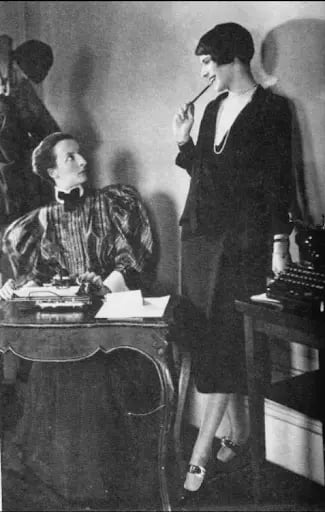Changes to the Roles of Women During the 1920s (Cambridge (CIE) IGCSE History): Revision Note
Exam code: 0470 & 0977
Summary
The 1920s were a decade of enormous change for some women. All women were granted the right to vote thanks to the passing of the 19th Amendment to the American Constitution in 1920. In addition to this, more women than ever before entered the workforce. By earning their own wages, women became economically independent from their husbands and fathers. This led to them making their own decisions and life choices. The short-haired, short-skirted “flapper” seemed to sum up this new spirit of independence in American women. In reality, the lives of many women remained unchanged from those of their mothers and grandmothers.
Life for women before the First World War
Before the First World War, society expected women to be:
Modest
Women had to wear long dresses
Women were not able to flirt with a man in public
Respectable
An older or married woman would accompany a single woman in public
Behaviours such as smoking and drinking would be regarded as unacceptable for a woman
A housewife
Most women did not work outside of the household
If women did work, they had stereotypical jobs, such as being a seamstress or a maid
Regardless of employment status, women were expected to look after children and the men of the household
The First World War changed the lives of women
From 1917, conscription meant that American men left the US to fight in the conflict
In their absence, women had to take on male-dominated jobs, such as:
Working in munition factories
Working in heavy industry
Bus and tram conductors
Police officers and firefighters
This work was vital in keeping the US functioning during the First World War
It convinced some men that women were valuable US citizens
Positive changes for women during the 1920s
In 1920, American women won the right to vote in general elections
Politicians soon began to introduce laws and changes to appeal to female voters
One example was the Maternity and Infancy Protection Act (1921)
This provided federal and state funds to prevent the deaths of mothers and babies during childbirth
By 1929, 25% more American women had jobs than in 1920
The economic boom created more jobs
Many women gained employment in offices as telephonists, secretaries and typists
In 1929, around 10.9 million women worked in jobs outside of the home
Earning their own money led to many women feeling less dependent on their husbands
They took more control of their own lives and began to make their own decisions
The divorce rate doubled during the 1920s
The independent attitude of many women seemed to be perfectly illustrated by the flappers, who emerged in American society in the 1920s
Flappers rejected the traditional expectations of women by:
Cutting their hair short
Wearing short skirts or men’s clothing, or making themselves look flat-chested
Using bold makeup
Smoking cigarettes
Drinking alcohol
Dancing suggestively to jazz
Being sexually active with men they weren’t married to
Having same-sex relationships in the open

Why did some women not experience change?
Although flappers became a symbol of the changes and new opportunities available to women in the 1920s, they did not reflect the lives of most women
Most employed women were in low-skilled jobs, where they were paid less than men for completing the same tasks
Management positions were very rarely given to women
Almost all politicians were men
Flappers were almost all white, wealthy, upper-class women from cities in the northern states
There was a backlash against the flapper lifestyle by groups that campaigned for “decent” behaviour by women
Women continued to have children early and bear nearly all of the burden of childcare
Worked Example
Describe how the roles of women in the United States changed during the 1920s.
[4 marks]
Answer:
One way in which the role of women in the United States changed during the 1920s was through political participation. Before the 19th Amendment was passed in 1920, women had been unable to vote. Once women had won the right to vote, they began to influence the policies of politicians and elected officials.
Another way in which the role of women in the United States changed during the 1920s was in employment outside the home. By 1929, the number of women employed outside the home had increased by 25%, which led to a larger number of financially independent women.
Examiner Tips and Tricks
It is important to remember that there was no such thing as a “typical” 1920s woman — any more than there was a typical 1920s man. Although flappers got a lot of attention and newspaper headlines, their appearance, attitudes and life experiences were not those of the majority of American women. If you are asked in an exam question about changes to the lives of American women during the 1920s, don’t fall into the trap of limiting your answer to a description of a flapper.

Unlock more, it's free!
Did this page help you?